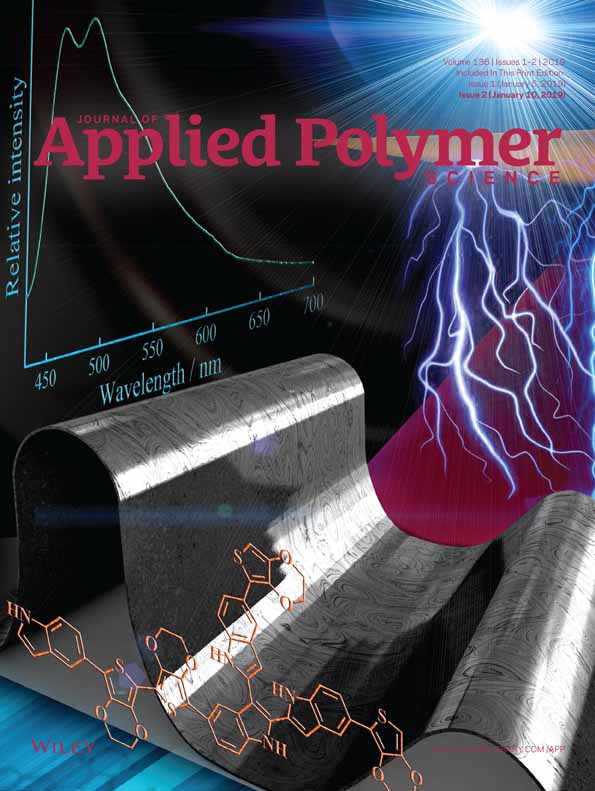Thermal conductivity improvement in electrically insulating silicone rubber composites by the construction of hybrid three-dimensional filler networks with boron nitride and carbon nanotubes
Abstract
In this study, we constructed hybrid three-dimensional (3D) filler networks by simply incorporating a relatively low content of one-dimensional carbon nanotubes (CNTs; 0.0005–0.25 vol %) and a certain content of two-dimensional boron nitride (BN; 30 phr) in a silicone rubber (SIR) matrix. As indicated by transmission electron microscopy observation, flexible CNTs can serve as bridges to connect BN platelets in different layers to form hybrid 3D thermally conductive networks; this results in an increase in thermally conductive pathways, and the isolation between CNTs can prevent the formation of electrically conductive networks. Compared to the SIR–BN composite with the same BN content, the SIR–BN–CNT composites exhibited improved thermal conductivity, slightly increased volume resistivity, and comparable breakdown strength without a largely decreased flexibility. When 0.25 vol % CNTs were incorporated, the SIR–BN–CNT composite exhibited 75 and 25% higher thermal conductivities relative to the neat SIR and SIR–BN composite with 30 phr BN, respectively, and a thermal conductivity that was even comparable to SIR–BN composite with 40 phr BN. © 2018 Wiley Periodicals, Inc. J. Appl. Polym. Sci. 2019, 136, 46929.




